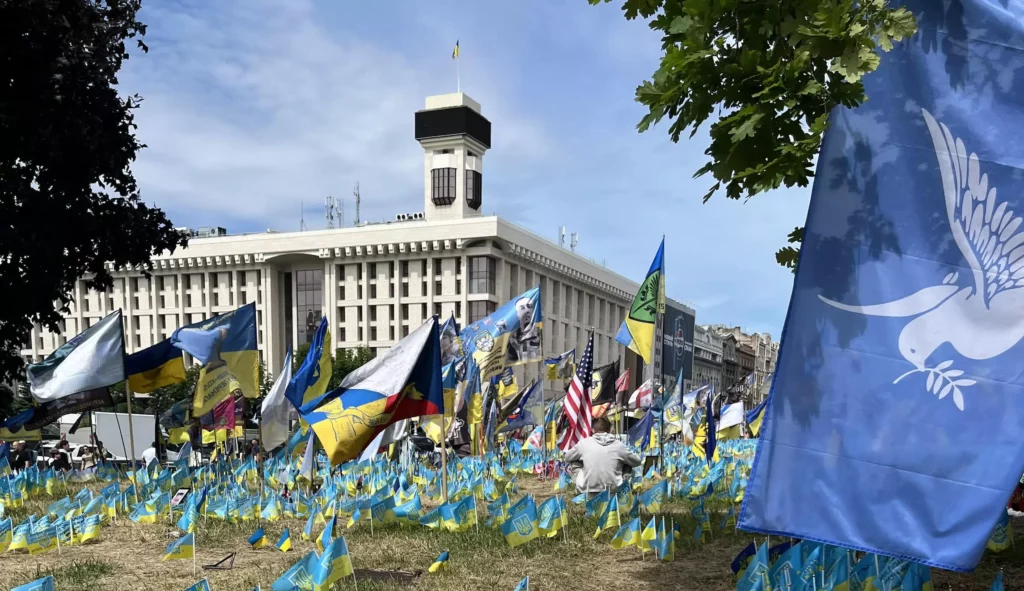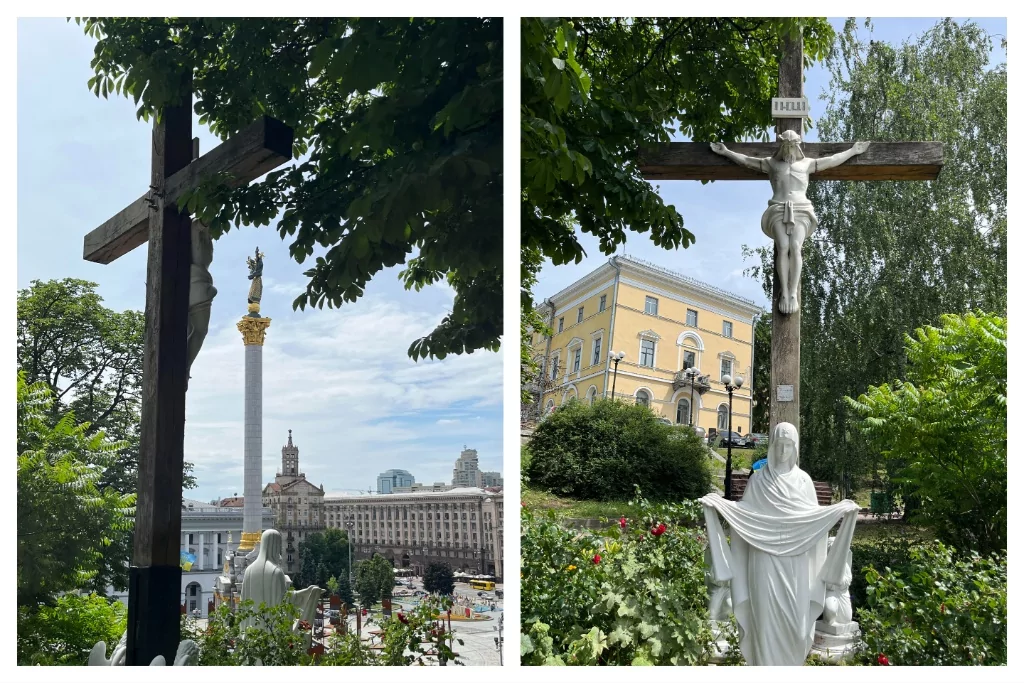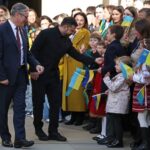
KYIV, Ukraine — A young man sat down amid a crop of Ukrainian flags and focused on one in particular while his loved ones, parents and a sister, it would seem, looked on from a respectful distance. The mother, after a moment, volunteered a brief explanation.
“My son, Hero of Ukraine,” she said in English, through tears.
It was just one of several scenes of grief that could be observed at the Maidan, Independence Square, on a sunny day. Kyiv’s central square contains, often literally, the struggle for the country’s independence from Russia — the protests and the monuments to the protesters who have resisted Kremlin schemes and sought to chart a course toward their European neighbors. In the midst of a full-scale war over that aspiration, the place has acquired the character of a national cemetery, its grassy areas planted with flags inscribed with the names of fallen soldiers.
“At least for the time being, while the war continues, it will remain like this,” Ukrainian foreign affairs committee Chairman Oleksandr Merezhko predicted.

Sometimes, a hearse can be seen parked on the forum, awaiting a group of mourners with a coffin.
“Unfortunately, this war brought a new kind of tradition … [a] funeral moment on this square in order to give a last thank you to [the] person who died, who sacrificed,” Rev. Sergiy Berezhnoy, a military chaplain of the Orthodox Church of Ukraine, said during a visit to a local parish. “We want all Ukraine to see how we take care about his sacrifice — how we [acknowledge] really it’s [an] important, for us, moment of our life. We want to [say] that these [are] our heroes.”
Their mourning takes place within view of a large crucifix erected on a hill overlooking the Maidan, one of many such displays that proliferated across the country after the collapse of the Soviet Union.

Berezhnoy, a native of the Donbas region of eastern Ukraine that Russian forces tried to seize in 2014, said that this juxtaposition of religious and secular iconography is a natural one for the Ukrainian people, who have experienced religious and political repression. The chaplain said that his grandmother, for instance, was a survivor of the Holodomor, the 1932-1933 famine inflicted by Josef Stalin’s policies toward eastern Ukraine.
“And my grandma, and other grandmothers and grandfathers of other people, also [were very] religious people,” he said. “And despite [the] Soviet persecution, they tried to, you know, to keep this faith, to bring this faith to next generation despite [the] Soviet pressure. … After that, when we become independent country, first of all, we started to restore our churches, our faith, and our tradition.”
The crucifix itself is a monument to that phenomenon. A plaque on the upright dedicates the display “to the victims of the Holodomor and political repression in Ukraine.” Surrounded by trees and flowers, it’s a welcoming place in the cityscape to light a candle — or a cigarette.
CLICK HERE TO READ MORE FROM THE WASHINGTON EXAMINER
“It’s a symbol … to understand that we all walk under the Lord God,” as a local man put it during a smoke break.





